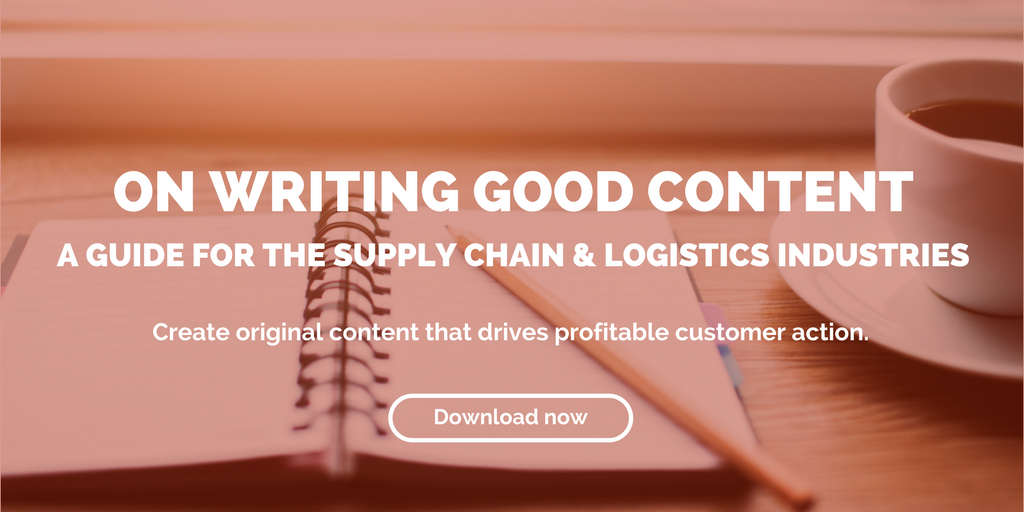
by Fronetics | Nov 16, 2015 | Blog, Leadership, Strategy, Talent

Recently a friend left her job for a new job that offered more money, a better title, and exciting work. She spent much of the last days at her job feeling excited about her new prospect, but something in her was unsettled. She had spent much of the last decade at her job forming and fostering incredibly close friendships. She’s the kind of person who skips over the small talk and digs into the meat of someone’s life fairly quickly. The level of her friendships at work was most likely what was keeping here there for so many years. Leaving felt like a huge loss, even though she had so much to gain at her next job.
Make New Friends But Keep the Old
According to the Deloitte Global Human Capital Trends 2015 report, the first of the six “key findings” is that “softer” areas such as “culture and engagement, leadership and development have become urgent priorities.” Half of those surveyed said that culture and engagement were important to them. Companies who have an engaged workforce can boast up to 147% higher earnings per share.
A study conducted by Dr. Vanessa Boute at Plasticity Labs, confirms previous findings about the tie between valuing co-workers and job satisfaction. The study of over 450 employees showed that those who listed their co-workers as one of their top five things they’re grateful for were more satisfied and more engaged. According to the report, “people who value their co-workers are also more grateful and happy.”
Deep Talk Not Small Talk
We know there’s a connection between friendship and satisfaction, but how do we get people truly engaged with one another in the workplace? My friend, who likes to skip small talk and go straight to in-depth conversation, may be on to something.
According to several studies, people can form deep connections within an hour. One researcher, Arthur Aron, of State University of New York at Stony Brook, has been exploring interpersonal closeness for decades. He found that the kinds of questions you ask can make all the difference. If you ask superficial questions, in the way of small talk, bonds won’t be formed easily or quickly, however if you ask more meaningful questions people feel connected quite quickly. Rather than asking, “How did you spend your vacation?,” a question such as “What would constitute a perfect day for you and why?” will bring about more self-disclosure and more of a feeling of connectedness.
Space and Time
Allowing time in the workplace for employees to connect is critical to friendship development. These days many workplaces are dreary hives of fast production. Encourage mid-day group walks or lunches, and after-work outings. Plan staff development retreats and allow time and space for people to connect. When people have friends at work they will work harder in the end. The time a walk or lunch takes will come back to you and the company in the form of superb work and dedication. Think of that walk as an investment in the company’s future. People may not mind letting down a colleague, but they often mind letting down a friend.
by Fronetics | Nov 10, 2015 | Uncategorized

When it comes to social media and the supply chain, popularity isn’t everything.
With more than 1.3 billion users, Facebook is the most popular social network. Your B2B business should not use Facebook just because of its popularity. Rather, your business should use Facebook (or not) because it fits into your marketing and business strategies.
There are a lot of social networks out there – and the number is growing every day (hello, Ello). Not only is it impossible for your business to be present on every social network, it is also not a good use of time and resources. Instead, you need to identify which social networks (or even which social network) is right for your business. What makes a social network “right?” The right social network is one through which you can create value by communicating with your current and prospective customers.
Leverage New Age Media put together an infographic which offers a great overview of six popular social networks.

Reviewing this infographic is a great starting point for determining where your business should be involved. However, you need to take the next step and, as mentioned earlier, determine which social network(s) best fit your business.
A recent survey of individuals within the logistics and supply chain industries asked which social networks their company uses. The top networks identified by respondents were: Twitter (94%), LinkedIn (86%), and Facebook (77%). Given that these three social networks are used the most, one would expect them to also have the great business impact. Surprisingly, this is not the case. 94% of respondents reported Twitter to be very impactful, 86% reported LinkedIn to be very impactful, while just 15% reported Facebook to be very impactful.
When participating in social media, be smart. Choose social networks that create value for your company. If you start using one and find it isn’t working for you, alter your strategy, or stop using that social network.
This article originally appeared on Electronics Purchasing Strategies.
You may also like:

by Fronetics | Nov 5, 2015 | Blog, Content Marketing, Data/Analytics, Leadership, Marketing, Strategy

We all want to see the fruits of our labors. Whether launching a product or a new social media campaign, we look for instantaneous numbers that will affirm we made the right choices. But here’s the problem: not all metrics are created equal.
So-called vanity metrics are measurements that have no bearing on your bottom line but can give you an inflated sense of success. Generally, they are easy to calculate but are influenced by too many factors—and are too vulnerable to random external events—to be reliable.
Website visits and number of subscribers are two classic examples. A spike in homepage hits may be the result of your marketing efforts, or it may be because of ghost spam. (Or, both.) Regardless, more visits do not necessarily correlate to increased revenue—just more visits. In the same vein, having 100,000 email subscribers means nothing if only 1% are opening them. You actually could be losing money in terms of resources allocated if the emails aren’t helping drive sales.
That’s why it is crucial to focus on return on investment instead of vanity metrics. You could waste hours reviewing a hundred different analytics that tell you nothing about how revenue was affected by a particular effort. Or, worse, you could use vanity metrics to justify decisions that don’t achieve their ROI.
As a simplified example: say you spend $100 on a banner ad for a new product on an industry conference website, and your analytics report that 100 people clicked through. This sounds like success! But don’t celebrate just yet. When you dig past the vanity metric, you find an extremely high bounce rate. That means most of those click-throughs left your site immediately, neither engaging with your brand nor moving any closer to becoming a customer. In fact, you find that only one click-through converts. Was it worth paying $100 for this one customer? Probably not.
But say you ran another $100 banner ad on an industry publication website, one that targets a younger audience than you think your product fits. Only 20 visitors clicked-through, which sounds less successful than the other ad. But when you follow those 20 click-throughs down the sales funnel, you see that 15 ended up purchasing $1500 worth of product. Already, the ad has paid for itself 15 times over. You’ve also learned that perhaps a younger audience is more suited to this product. The ROI proves the vanity metric was quite misleading in this case.
Lean-startup pioneer Eric Reis, who coined the term vanity metrics, said, “The only metrics that entrepreneurs should invest energy in collecting are those that help them make decisions.” In other words, measure the things that will tell you if an effort was profitable so you know where to put your time and money.
While vanity metrics tell you nothing about your bottom line, ROI can help you determine whether it was worth spending your resources in a particular way. This is extremely useful on platforms like blogs and social media, where things are constantly changing. Using ROI as a litmus test, you can keep experimenting and making sure you’re using these tools effectively. Tracking a vanity metric like number of followers, which is likely to build over time regardless, gives you no indication of which experiments were successful and which weren’t.
Your resources are limited, so it’s crucial to evaluate your efforts with meaningful numbers that illustrate their effect on your bottom line. Calculating ROI might take some time—both in the few extra minutes to do the math and the amount of time that needs to pass before all the data is available—but that number will be infinitely more valuable to you than any vanity metric on your Google Analytics report.
What metrics do you report to your team?
Related posts:
When it comes to marketing we work with our clients to create and execute strategies that drive success and elevate their brand position within the industry. Unlike other firms, we align marketing programs with business objectives and, through a data driven approach, are able to deliver results with a targeted ROI. Our team is comprised of strategists, marketing professionals, writers, designers, and experts in social media. Together we leverage our experience to increase brand awareness, position our clients as thought leaders, drive meaningful engagement with prospects and customers, and help businesses grow. Learn more

by Fronetics | Nov 4, 2015 | Blog, Content Marketing, Marketing, Supply Chain
3 things supply chain hiring managers should look for when hiring a copywriter.
Since 94% of domestic B2B buyers conduct research online to make purchase decisions, maintaining high-quality content on your company’s website is crucial for attracting new business. But who has time for web upkeep, much less for the generation of new blog posts, emails, and various other content? Enter the copywriter.
An effective copywriter can help drive consumers to your website, convince them of the quality of your products/services, and ultimately help convert those leads into customers. A lot of writers can do one of these functions. The gold standard, of course, is a copywriter with a proven track record in all three functions.
How do you know if a copywriter will be effective for your business? Here are a few specific skills and experiences supply chain hiring managers should look for in a potential hire:
Someone who understands SEO.
An SEO-savvy copywriter can impact your business by increasing the number of visitors (i.e., potential customers) to your site. That’s because 77% of today’s buyers use Google to research information about products.
A copywriter trained in search engine optimization (SEO) knows how to write and format your site so it gets prioritized by Google in web queries for your products. Three of four people will click on the top five search results. So the closer you can be to those top five results, the better your chances at driving a buyer to your site. That’s a crucial first step in converting that lead into a new customer.
Look for SEO training or experience on a potential copywriter’s resume. And ask for any metrics illustrating how his/her search-engine-optimized content has increased organic traffic to a client’s website. A copywriter who understands SEO can help achieve the same result for you over time.
Someone who understands branding.
Sure, it’s great if you can find a copywriter with experience in the supply chain — the vocabulary and industry knowledge are already in place. But, likely, a solid writer who has developed content for a variety of industries has the technical skills and resourcefulness to get up to speed quickly.
Consider the value of a candidate who also has marketing writing and branding experience. This person has the know-how to create content driven by your business objectives and a mind for strategy that can promote your image among consumers and other businesses.
A 2015 global study on B2B branding has shown its positive impact on the perceived quality of a product and creation of new market opportunities. Branding instills confidence and trust among consumers.
The marketing copywriter can craft a consistent, compelling brand narrative across all of your digital channels. That means your website, blog posts, white papers, social media, emails, etc., will work together to solidify and enhance your business’s reputation in the marketplace, which will serve you beyond any individual campaign.
Someone who understands user experience.
User experience plays a vital role in conversion: the more positive the customer’s interaction with your business, the more motivated s/he will be to purchase from you. Additionally, Gartner Research estimates that by 2020 customers will manage 85% of their relationship without talking to a human. That means your web content will bear most of the user-experience burden.
A copywriter who understands user experience anticipates what buyers are seeking at any given point on your website and adjusts the copy so that the answer is clear and easy to find. Paragraphs of dense, technical copy on a product page could easily turn a buyer away, for example. A well-placed, well-written call-to-action, however, could lead to a purchase.
To find a copywriter who understands user experience, look for content that is not only polished, but also helpful, persuasive, and, above all, accessible. Writing samples should reflect where in the sales cycle a user would encounter it. That candidate could play a vital role in helping you convert leads into customers.
Hiring a copywriter represents an opportunity to bring someone on board who can do more than produce content: they can help achieve your business goals.
Related posts:


by Fronetics | Nov 2, 2015 | Blog, Marketing, Social Media, Strategy

In mid-October, LinkedIn made some big changes: LinkedIn Groups are private and there’s a new, standalone LinkedIn Groups app for iOS users. Many LinkedIn Groups were used for the purpose of networking, research, and prospecting, however many people were misusing, and even abusing, the Group option. Rather than using groups properly, to form relationships, engage with industries that could supplement yours, and keep up with hot topics, the group option was often used for self-promotion.
The Changes
According to LinkedIn, these changes were spurred by consumer feedback. “Our research has shown that professional conversations are most effective in a private trusted space, so conversations in groups won’t be visible until you’ve joined the group. Joining a LinkedIn group now requires either an invitation or approval of your request. Our data has shown that open groups have historically attracted a larger percentage of low-quality conversations. Members-only groups have created significantly more participation and conversations than others (up to five times more), indicating that members feel more confident contributing in these types of groups.”
Some additional, prominent changes:
- Moderation: Conversations will be posted without the need for approval from a moderator, manager, or group owner, however those people can still remove off-topic conversations.
- Standard and Unlisted Groups: In an effort to simplify things for the consumer, groups will be either unlisted, meaning that they don’t show up in search results and only a manager/moderator can invite people members, or standard, meaning that groups do show up in search results and members can invite anyone with a 1st degree connection.
- Content Filtering: Filtering of spam and low-quality content to keep promotional material out of conversations.
- Subgroups: Subgroups will no longer exist to help clear up confusion. Any current subgroups will become their own, standalone groups.
- Mentions in Conversations: Like other forms of social media, the @ symbol will now be used before a name in order to reference someone and bring them into the conversation.
Other changes can be found at LinkedIn’s Help Center page.
Group Etiquette
If you’re already using groups in smart way, you’ll only see improvement from LinkedIn’s changes. Say goodbye to spam and relentless self-promotion. Groups may become more meaningful with a more exclusive approach. The people who are genuinely interested in having specific, topical conversations will. Here are some tips on how to navigate the new Groups:
-
Engage Don’t Enrage:
Keeping in mind that there’s a difference between narcissism and seeking feedback, wait a bit before you post your own blogs, articles, or other branded content. You may want a group of talented, knowledge people to review your writing, but you need to establish yourself as a valued member of the group first. Comment on and like others’ posts. Put in your time and build rapport.
-
Prudence in Posting:
When there’s a discussing going about a topic that speaks to you, you might feel anxious to jump in with a relevant article you’ve written, but consider your timing. Only after posting third-party articles and blogs, to show your support of others and breadth of knowledge, consider posting your own. When you do post your first article, it might be helpful to connect it to the groups’ influence. For example, Based on the recent, rich conversation about the engagement of Boomers and Millennials in the workplace, I gather my recent years of experience with this and wrote an article I though I’d share with you. I appreciate the fruitful conversations here that helped spur this article.
-
Connect Cautiously:
As with all etiquette, the idea isn’t to approach people with fear, but with respect. Sometimes, early on, respect can be established by being cautious in order to better understand individual and community needs and norms. Once you’re in a group, don’t be unknowingly creepy. Engage with people who might have similar interests or who you feel might be attracted to your brand. First comment on their posts, like an article, show that you’re engaged and have something to offer intellectually. Give them your thoughts before your products. Once some sort of engagement is established, then send a connection request.
The new changes to LinkedIn’s Group option is going to serve everyone well, whether you’re in marketing in or any other field. It means more meaningful engagement and less bothersome noise and chatter.
Fronetics Strategic Advisors is a leading management consulting firm. Our firm works with companies to identify and execute strategies for growth and value creation.
Whether it is a wholesale food distributor seeking guidance on how to define and execute corporate strategy; a telematics firm needing high quality content on a consistent basis; a real estate firm looking for a marketing partner; or a supply chain firm in need of interim management, our clients rely on Fronetics to help them navigate through critical junctures, meet their toughest challenges, and take advantage of opportunities. We deliver high-impact results.
We advise and work with companies on their most critical issues and opportunities: strategy, marketing, organization, talent acquisition, performance management, and M&A support.







